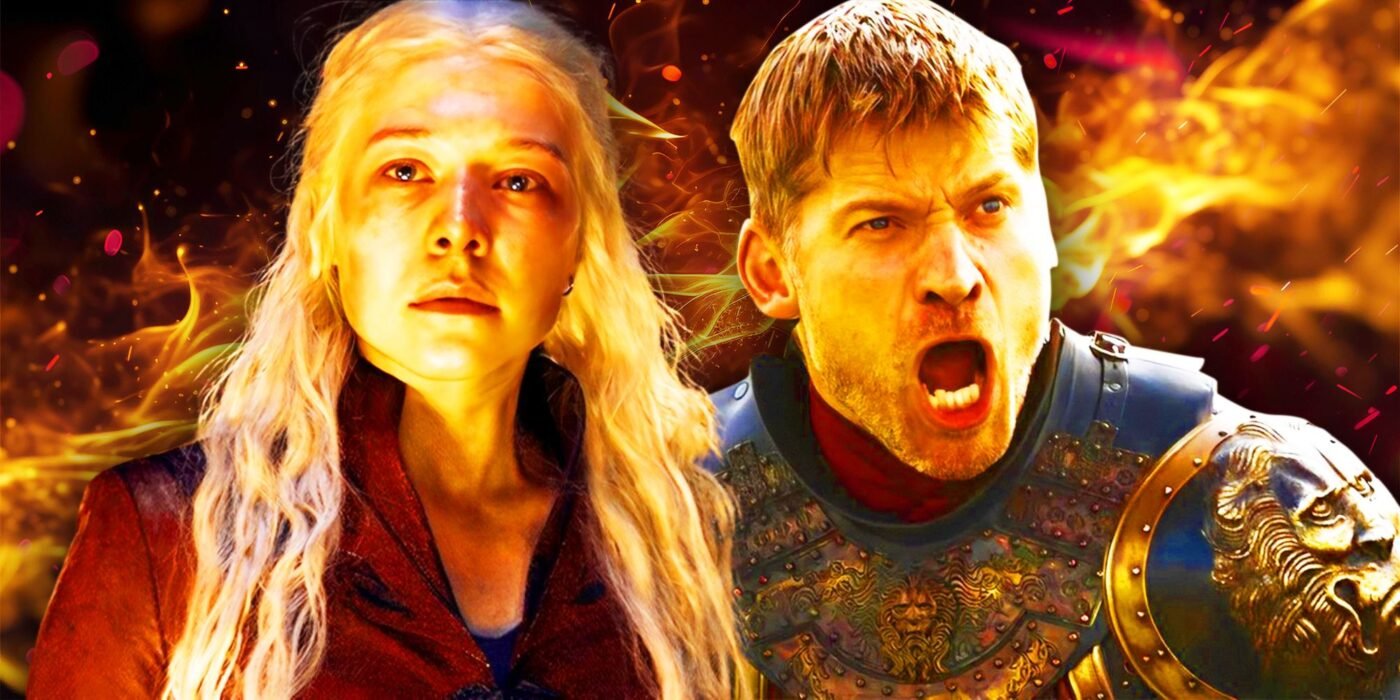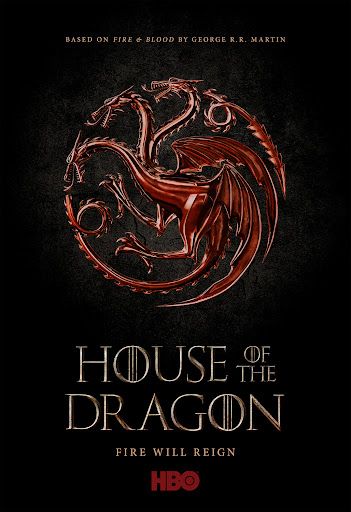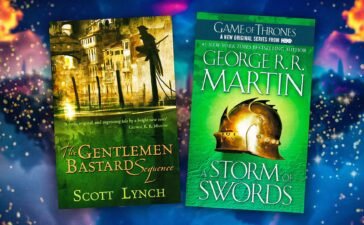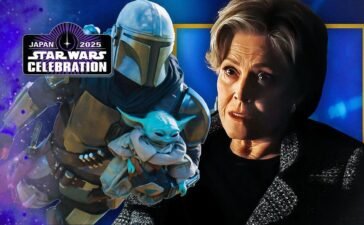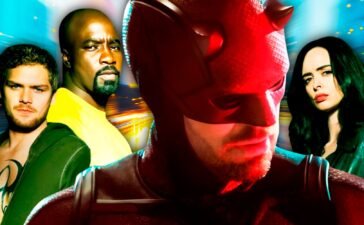There are several characters in House of the Dragon that mirror prominent figures from Game of Thrones. HBO’s fantasy universe is based on George R.R. Martin’s A Song of Ice & Fire novels, a prolific series with extensive lore and histories. The companion book Fire & Blood examines House Targaryen’s history from Aegon the Conqueror to several other monarchs in the dynasty, examining the build-up to the version of Westeros audiences are familiar with in Game of Thrones. One of the most crucial aspects of the Dance of the Dragons is that it reflects the main story of ASOIAF.
The Dance follows a conflict of succession surrounding the death of a king, resulting in a bloody conflict that ultimately weakens the realm, much like the War of Five Kings in Game of Thrones. The lore in George R.R. Martin’s world is so vital because he writes his histories with parallels to the main story. Not to mention, the performances from House of the Dragon’s cast and the changes made by the writers have contributed to more notable echoes of famous Game of Thrones characters.
10
Criston Cole – Jaime Lannister
Just Two Guys Struggling With Their Kingsguard Vows
Ser Criston Cole can be associated in many ways with Jaime Lannister, primarily because both of their arcs explore the Kingsguard’s vows and the complications of swearing vows of chastity, for example. In Westerosi society, reputation is everything, and the vows sworn by knights and members of the Kingsguard are held in high social regard. As for Jaime and Cole, both characters famously break their vows out of a desire for women, Cersei and Rhaenyra, respectively, altering the course of their lives and forcing them to reckon with their morality.
Jaime is ridiculed as the Kingslayer, and Cole is seen by many of his fellow knights as being dishonorable for helping Aegon II usurp the throne.
In Jaime’s case, he also breaks his vow by killing the Mad King, whom he was sworn to protect. Jaime is ridiculed as the Kingslayer, and Cole is seen by many of his fellow knights as being dishonorable for helping Aegon II usurp the throne. Both characters are shown to reflect on their actions, with Cole’s monologue in House of the Dragon season 2’s ending demonstrating his profound self-hatred and regret. Jaime, meanwhile, has his famous bath monologue scene in Game of Thrones season 3, where he actually reflects and begins to turn a new leaf.
9
Alicent Hightower – Cersei Lannister
Two Queen Regents Who Birth Monster Child Kings
Alicent Hightower is depicted as being far more cruel and Cersei Lannister-like in Fire & Blood, but the show has made her out to be a bit more of a sympathetic character. There are only a few episodes in season 1 where she seems to embody the bitterness of someone like Cersei, but there are still notable parallels. Both Alicent and Cersei were married to a Westerosi king at a young age, whom they outlived, and their children created subsequent questions of succession.
In both cases, the kings, Viserys and Robert Baratheon, declared someone else as their successor. Viserys planned for his daughter Rhaenyra to be his heir, but Alicent sought to have her son Aegon II take her place. Robert Baratheon hoped to have Ned Stark become Protector of the Realm to ensure Joffrey was raised properly, but Cersei had Ned disposed of to plant Joffrey on the throne. Alicent and Cersei are both regarded as cruel, vindictive women in the public image of Westeros.
8
Aegon II Targaryen – Joffrey Baratheon
Joffrey & Aegon Are Some Of The Most Detestable Kings Imaginable
To continue the Alicent-Cersei comparison, their sons, Aegon II and Joffrey Baratheon, also have much in common. Joffrey Baratheon is regarded as one of the best villains in television history, as one of the most repulsive and hated characters in all of Game of Thrones. He’s the worst person imaginable to hold power over an entire continent, as not only is he immature and impulsive, but he’s also sadistic and outright evil.
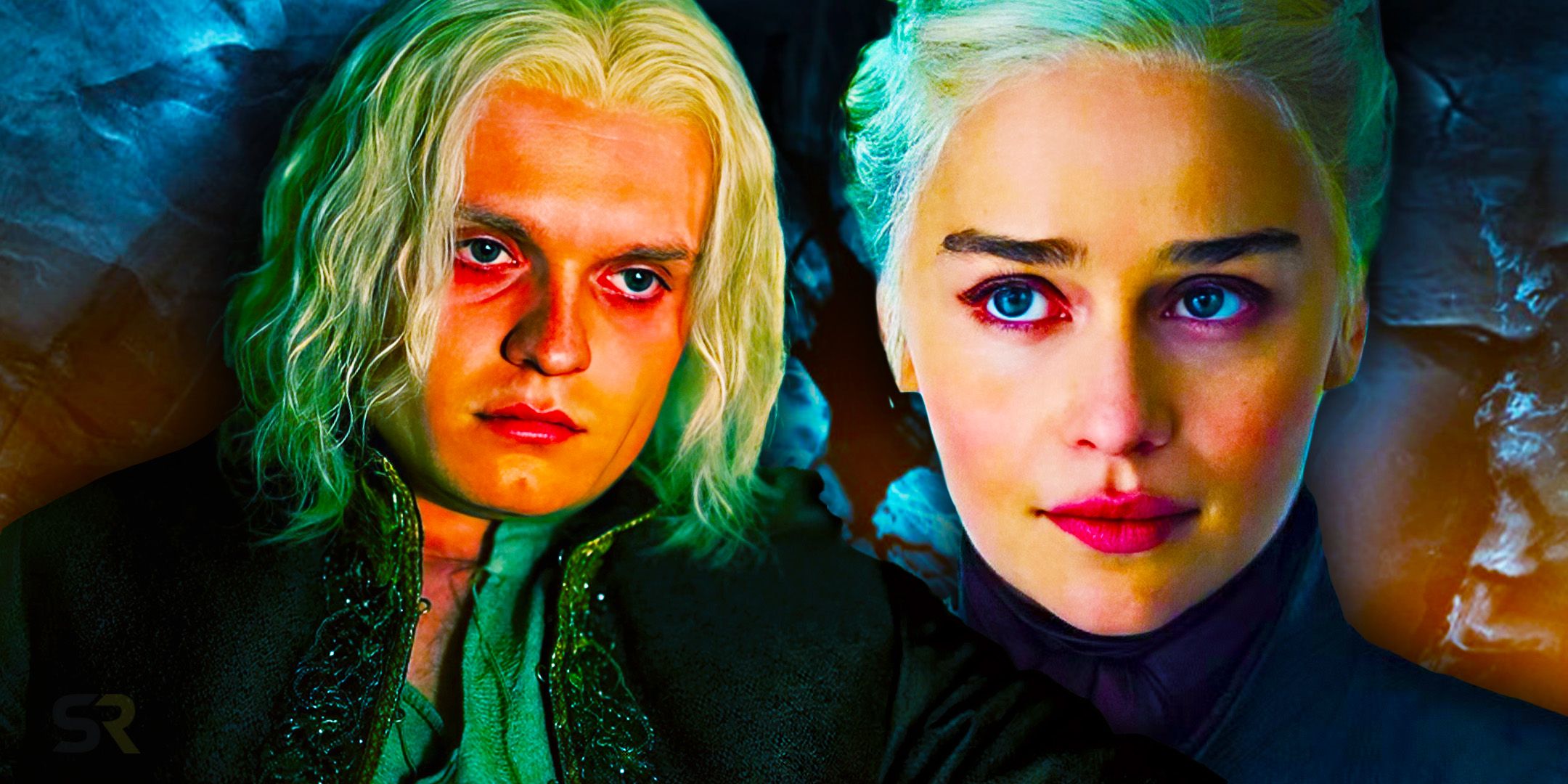
Related
The Other Daenerys Targaryen Explained: Who Dany Got Her Name From In Game Of Thrones
Daenerys Targaryen is one of the most iconic Game of Thrones characters, but she shares her name with another figure who might foreshadow her future.
Aegon II felt more Joffrey-like in House of the Dragon season 1, while the sophomore season tried to steer him in a more likable direction. Still, Aegon II is the type of king who requires constant affirmation from those around him, grows bored in conversations of politics and warfare, and, importantly, has a history of mistreating women in highly abhorrent ways. There are some key differences, though, as Aegon II shows genuine affection for his children, seems to sympathize with the small folk, and is willing to risk riding into battle, all of which are hard to imagine Joffrey doing.
7
Otto Hightower – Tywin Lannister
Otto & Tywin Put Their House’s Legacy Above All Else
Viewers have often described Otto Hightower as being a mixture of Tywin Lannister and Littlefinger. In season 1, he leans into some Littlefinger tendencies as he looks to plant his daughter as queen and usurp the throne with his grandchildren. Overall, Otto is far more similar to Tywin, with the crucial difference being that he’s just not as strong and capable as the Lannister lord from Game of Thrones, who would likely never allow his grandson to oust him from his position as Hand of the King.
Otto Hightower largely wears his cards on his sleeve, and sometimes, his actions are arguably for the betterment of the realm.
That said, the paramount quality shared by Otto and Tywin is that, while both men are clouded by emotions at times, their primary goal is to ensure the lasting legacy of their respective houses. Otto isn’t like Littlefinger, who has plans layered beneath schemes, and his entire motivation is a self-driven desire to be king and own everything. Otto Hightower largely wears his cards on his sleeve, and sometimes, his actions are arguably for the betterment of the realm. But his main drive is to see the Hightowers advance their political standing, and he’s conniving in pursuit of his goal.
6
Viserys I Targaryen – Robert Baratheon
Viserys & Robert’s Deaths Are The Catalysts For Their Story’s Events
In terms of outward personality, Viserys Targaryen and Robert Baratheon are very different men and very different kings. Robert is a king whose claim to fame is being a great warrior, and his successes have been in wars like Robert’s Rebellion and the Greyjoy Rebellion. Oppositely, Viserys remained out of action his whole tenure and never took the chance to prove himself in war. While both kings served through periods of relative peace, their roles in their respective stories are vitally similar.
They’re two kings who might have meant well but ultimately failed to act on their good intentions.
Viserys and Robert can be seen as flawed protagonist figures in their stories. They’re both men the audience hopes will step up and take action in meaningful ways, yet they never do. Because of their inaction, their deaths leave the kingdoms in disarray, not only with conflicts of succession but also by leaving behind situations where the more malevolent faction (Hightowers/Lannisters) has the power in King’s Landing. They’re two kings who might have meant well but ultimately failed to act on their good intentions.
5
Mysaria – Varys
The Worm & The Spider Share Similar Origin Stories
When characters are nicknamed “worm” and “spider,” they tend to go hand-in-hand. These two crucially fit into a similar mold of the schemer archetype in George R.R. Martin’s world. They’re characters who have access to vast networks of information and spies and aren’t afraid to use that information to crush their enemies. But the similarities between Mysaria and Varys don’t stop at them just being plotters.
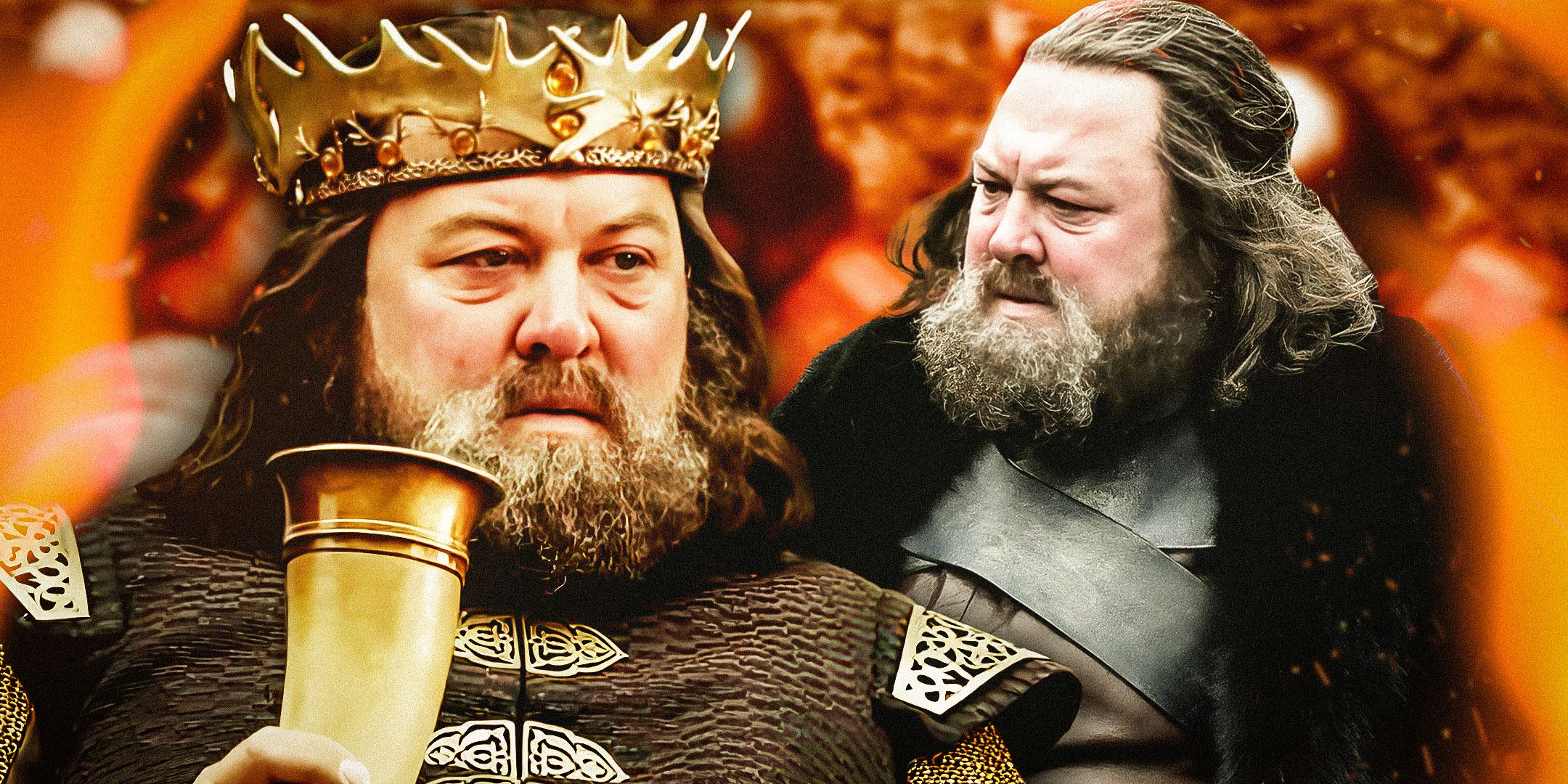
Related
Robert’s Rebellion In Game Of Thrones Explained: Purpose, Sides & Timeline
Robert’s Rebellion is responsible for much of what happens in Game of Thrones, but the show doesn’t dig into it as much as George R.R. Martin’s books.
Both Mysaria and Varys arrived in Westeros essentially as nobodies. They both come from cities in Essos where their origin stories revolve around some abuse from cruel masters. In the case of Varys, he was castrated by a sorcerer in Myr, while Mysaria received her scar from her abusive father. They then used their survival skills to build needful enterprises in King’s Landing, establishing value that kings and nobles would desire, earning them favor with the right people.
4
Jacaerys Velaryon – Jon Snow
The Brooding, Curly-Haired, Bastard Archetype
Jacaerys really goes full Jon Snow mode in House of the Dragon with beautiful curly hair and a trip up north to the Wall, but there have always been contrasts and parallels in their arcs. Jon Snow is the son of a Targaryen heir, which makes him the rightful ruler of the Seven Kingdoms, but he’s raised believing himself to be a bastard of House Stark. Jacaerys Velaryon is the bastard son of a Targaryen heir who’s raised to be the ruler of the Seven Kingdoms, though he’s biologically not the proper heir.
These character arcs echo each other, and though there are major differences, the characters end up with similar mannerisms and demeanor. Both Jon and Jacaerys are burdened by the idea of being a bastard and how it’s damaged their social standing, causing both of them a great desire to prove themselves. Jon believes he has nothing to gain from remaining at Winterfell, so he seeks honor with the Night’s Watch. Jacaerys looks to get involved with the Dance of the Dragons despite only having a small dragon at his disposal, hoping to earn his right to be king.
3
Alys Rivers – Melisandre
Alys & Melisandre Fuel War With Their Mystical Visions
Alys Rivers joined the cast of House of the Dragon season 2 and has been an outstanding entry, providing a mystical feeling to the series similar to Melisandre in Game of Thrones. With the changes to the Aegon’s Dream prophecy, in the TV adaptations, Alys has been made to resemble Melisandre even more as she guides Daemon toward his role in the prophecy. Like how Melisandre has seen visions of the Long Night and associates them with Stannis, Alys believes Daemon has to serve his purpose in fulfilling Aegon’s Dream.
Throughout the Harrenhal plot in House of the Dragon season 2, Alys slowly guides Daemon through visions toward returning to Rhaenyra. Only when he fully experiences Aegon’s Dream does he realize he needs to swear loyalty to his wife and help her win the war. This is a bit more heavy-handed than how prophecies play out with Melisandre, as the Game of Thrones character isn’t able to see a clear-cut version of the future.
2
Larys Strong – Littlefinger
Larys & Littlefinger Are The Scheming Masterminds Of Their Shows
The obvious point of comparison between Littlefinger and Lord Larys Strong is that they’re schemers. Littlefinger’s whole deal in Game of Thrones is that he’s constantly layering plans and examining possible outcomes for moves. He’s calculated every move repeatedly with the end goal of seeing himself seated on the Iron Throne, possessing ultimate power. Larys, on the other hand, doesn’t seem to be as driven, but he’s certainly the closest thing House of the Dragon has.
Like Littlefinger, Larys was raised in the presence of more physically imposing men who were more beloved and romanticized by Westerosi society. Ser Harwin Strong is to Larys what Brandon Stark was to Littlefinger in that both characters shaped them to be jaded about the society they live in. In turn, they utilized the skills they did have, outliving their brutish rivals and planting themselves in positions of power in King’s Landing.
1
Rhaenyra Targaryen – Daenerys Targaryen
Rhaenyra & Dany Are The Targaryen Heroines (Sort Of) In Their Respective Stories
When reading Fire & Blood, one likely wouldn’t compare Martin’s depiction of Rhaenyra Targaryen to Emilia Clarke’s iconic portrayal of Daenerys in Game of Thrones. It’s a construct of House of the Dragon’s writing and the performances of Milly Alcock and Emma D’Arcy that Rhaenyra has become such a fan favorite, and HBO seems to have modeled her in a similar way on purpose.
From House of the Dragon’s opening shot, Rhaenyra riding Syrax is meant to embody the feeling of mystical epicness that audiences felt watching Dany for eight seasons of Game of Thrones. She’s the heroine who potentially has a cold, unforgiving side to her and also represents an important feminine strength in a patriarchal society. Rhaenyra and Daeenrys are incredibly easy protagonists to root for because they’re women who’ve defied expectations and carved out paths to become leaders in their respective eras.

